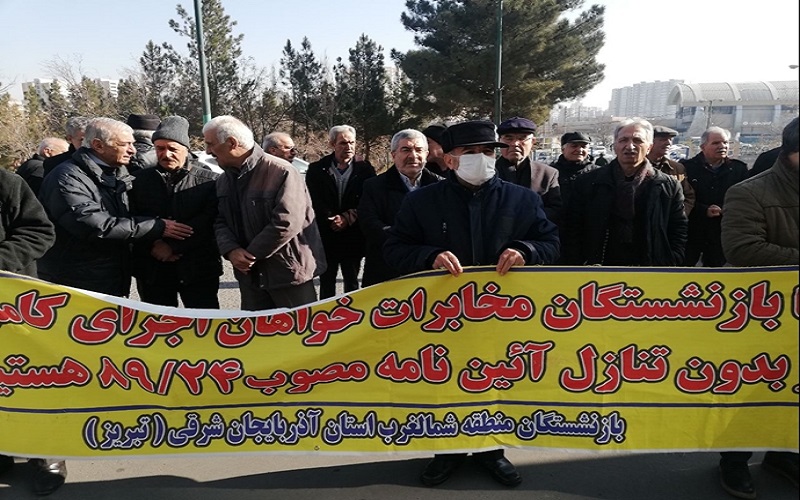
Sweden Accuses Mosque of Iranian Espionage
Iran’s Nuclear Ambitions: U.S. Intelligence Uncovers Secret Efforts to Expedite Weaponization
ECBA Urges UN Action Against Death Penalty for Iranian Activists
Resistance Rises in Zahedan: PMOI Units Challenge Iran’s Repression
Poverty and Food Insecurity in Urban Iran: A Deepening Crisis
In response to the increasing wave of protests across Iran and growing concerns among regime officials, Valiollah Bayati, spokesman for the Internal Affairs Commission and Councils of the regime’s parliament, announced the approval of a ban on gatherings and marches in “sensitive and security-related places.”
On Monday, February 3, the Internal Affairs Commission and the Councils of the Parliament convened a meeting attended by representatives from the Ministry of Interior, the Presidential Legal Affairs Office, the Ministry of Intelligence, the Revolutionary Guards Intelligence Organization, the National Police Command (Faraja), and the Parliament’s Research Center. During the session, the commission reviewed a proposed plan to regulate gatherings and demonstrations.
Bayati stated that Articles Four and Five of the plan, which outline procedures for holding protests, were approved. Article Four explicitly prohibits gatherings and marches in “sensitive and security-related places.” Article Five mandates that individuals seeking to organize demonstrations must submit their requests to local governorates or districts, or register them in an official system to receive a receipt.
While Bayati did not specify which locations are considered “sensitive and security-related,” this legislation is expected to effectively ban protests in front of key government institutions, including the presidential office, parliament, ministries, governorates, and other high-ranking government buildings.
The increase in protest gatherings by workers, retirees, and pensioners has heightened regime anxieties over the potential for further unrest and the risk of mass mobilization against the government.
In 2024 alone, Iran witnessed at least 2,396 protest gatherings and 169 strikes across various sectors in 31 provinces and 70 cities. These figures highlight the worsening economic conditions faced by retirees and workers, despite the regime’s repeated promises of economic relief.
Amid these developments, on Monday, February 3, an emergency meeting was held at the presidential office with the heads of the three branches of government in attendance.
During the session, regime president Masoud Pezeshkian acknowledged foreign narratives that the Islamic Republic is at its weakest, stating: “They want to create division and discord among the people so that they will protest, allowing them to exploit these grievances for their own interests.”
Parliament Speaker Mohammad Bagher Ghalibaf also addressed rising economic pressures, remarking: “People are being crushed under economic difficulties, yet they remain silent out of respect for the sanctity of the Ahl al-Bayt and Islam.”
Regime’s Chief Justice Gholam-Hossein Mohseni-Eje’i identified the economy as the nation’s most pressing issue, warning: “If we fail to address economic problems today, we will not be able to manage cultural and security challenges tomorrow.”
These statements reflect the Iranian regime’s deepening fears of a new wave of nationwide protests. As it grapples with escalating internal crises and widespread discontent, the regime appears increasingly desperate to maintain control. However, with living conditions continuing to deteriorate, these latest restrictions may only serve to fuel further unrest, pushing the regime into an even more precarious position.
About Us: Precious analysis and exclusive details have become the Iran News Update a trusted counterweight to the state-run censorship in Iran…
